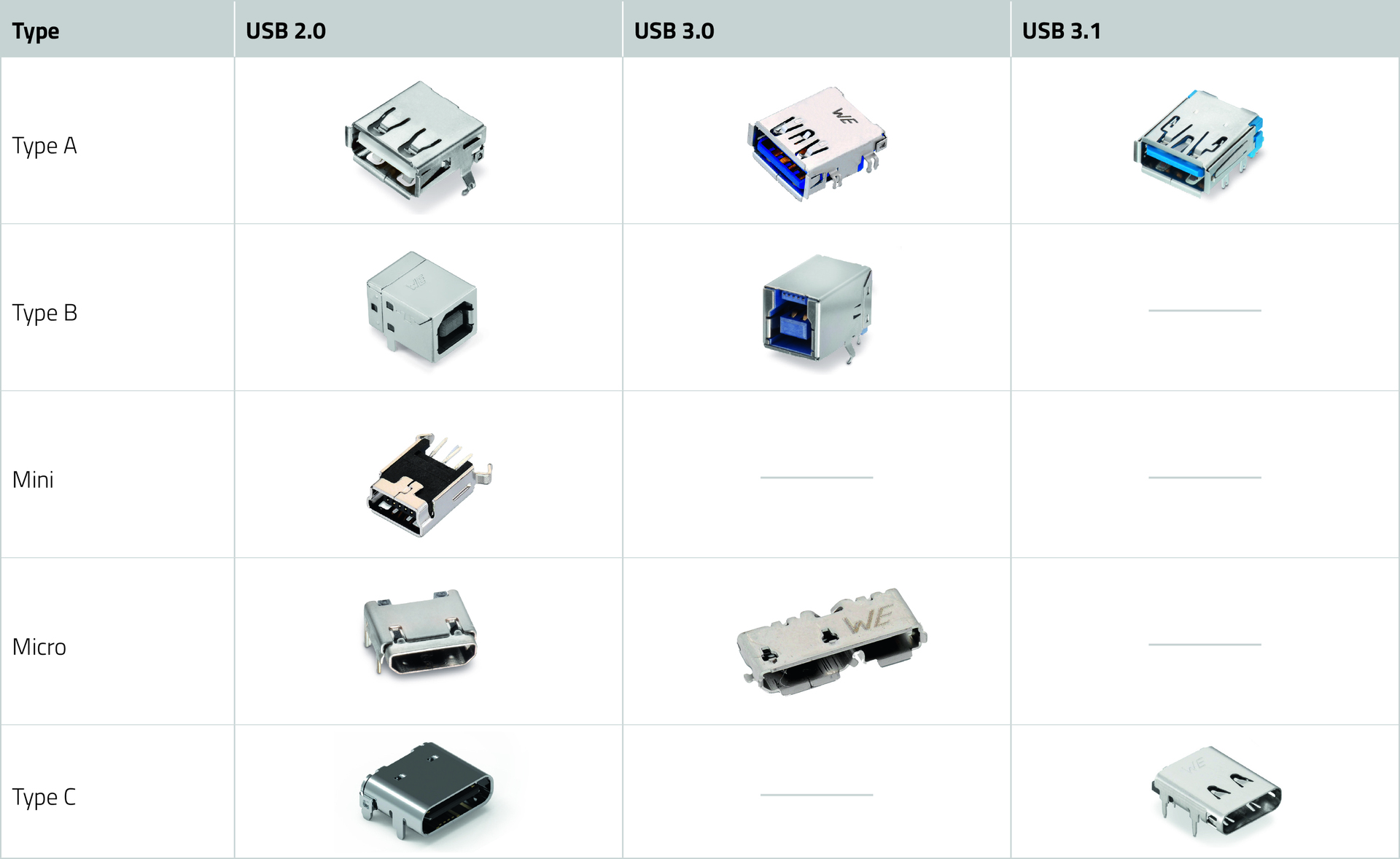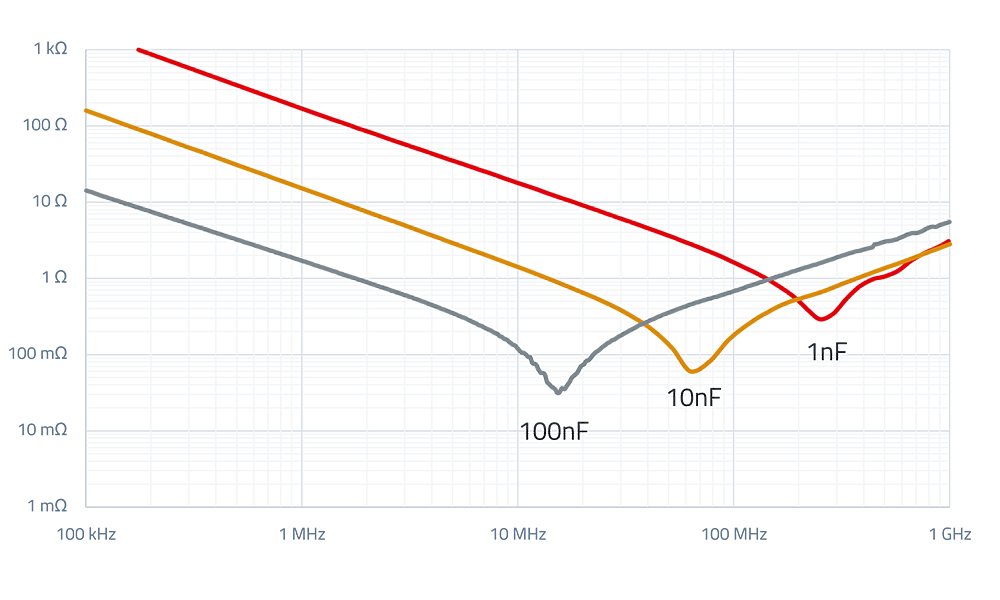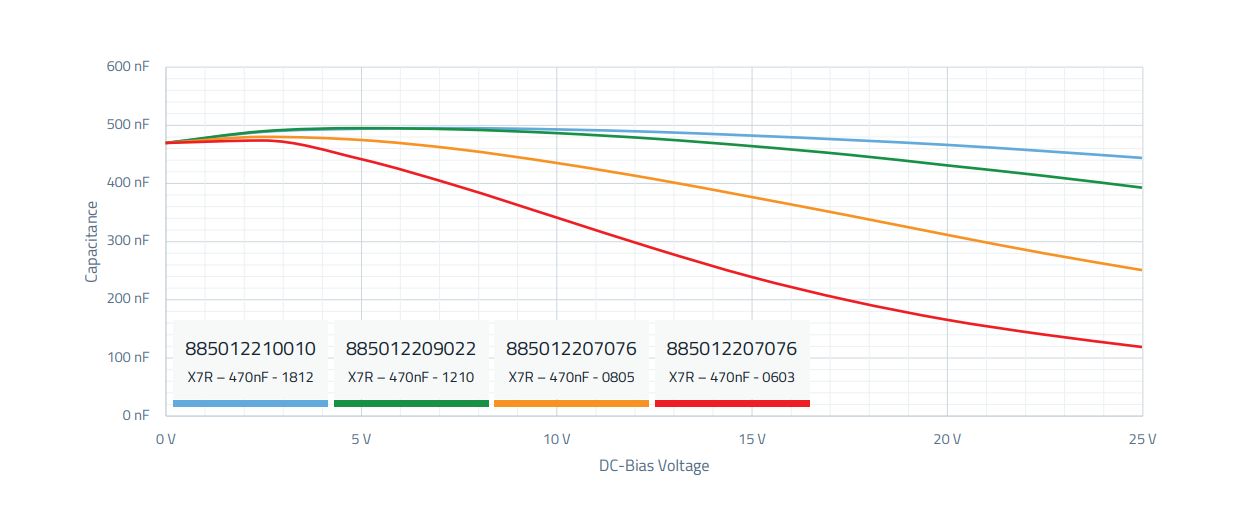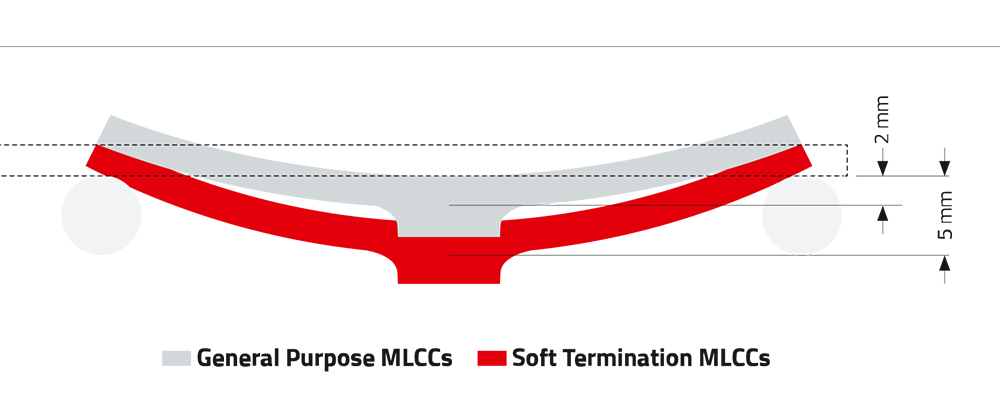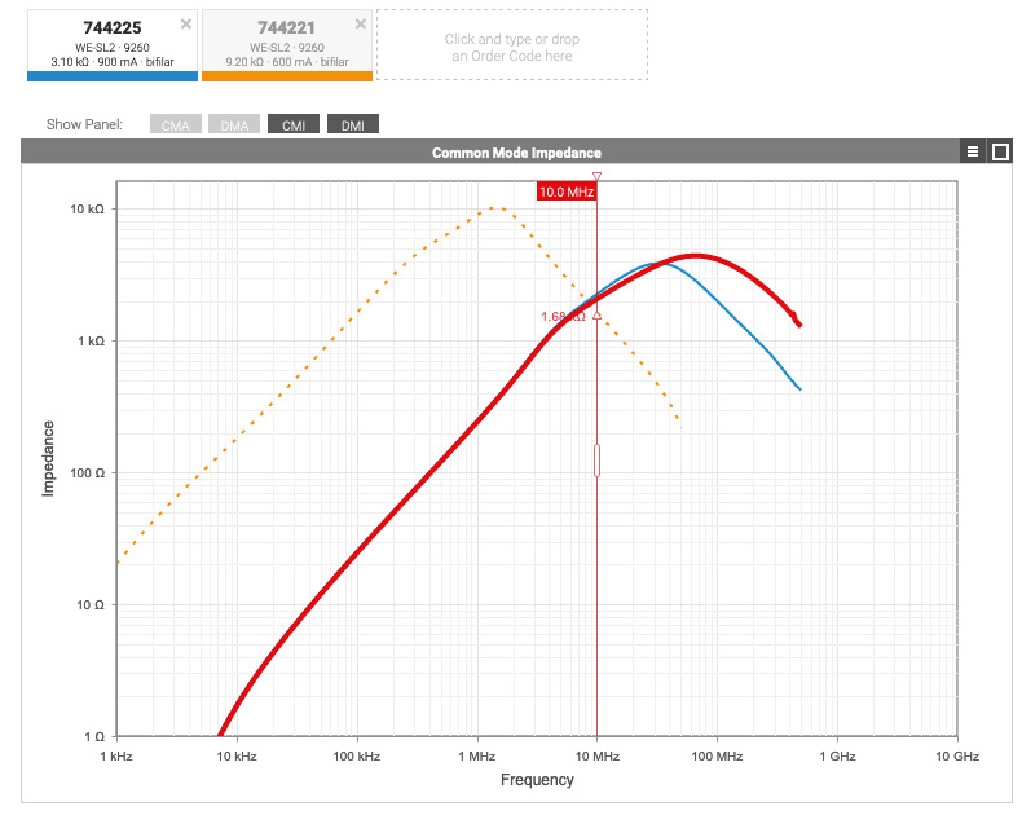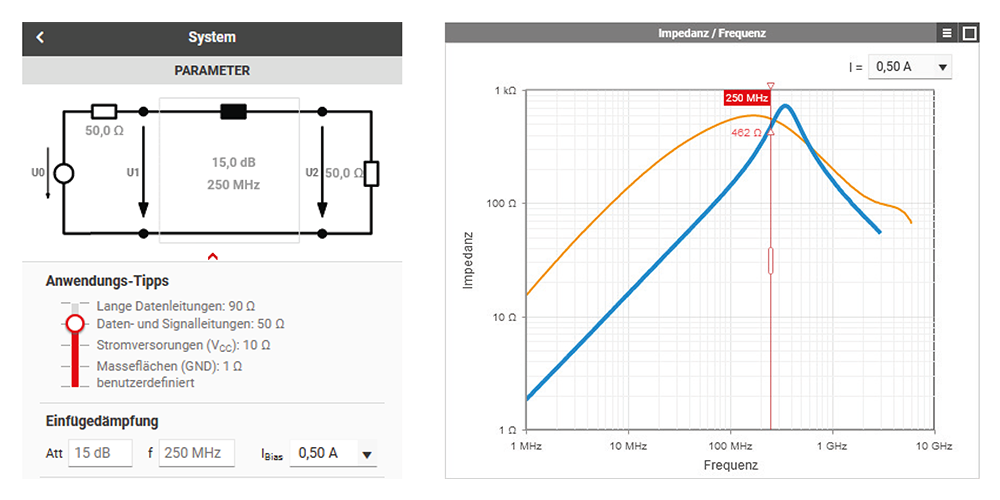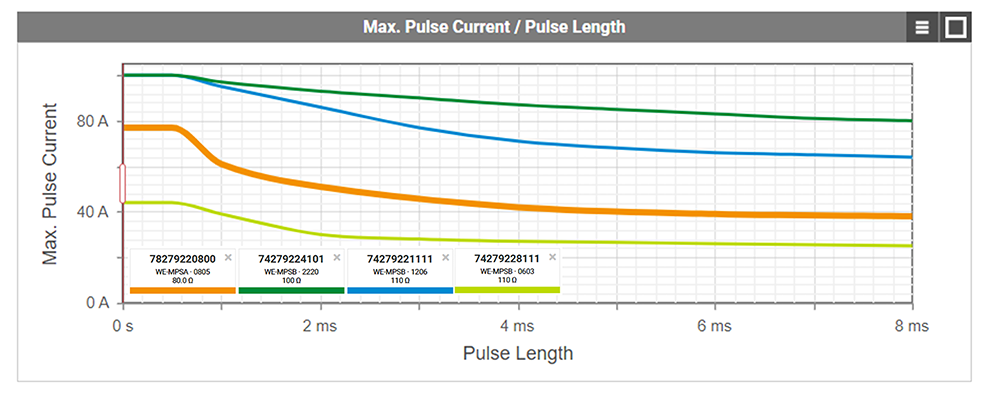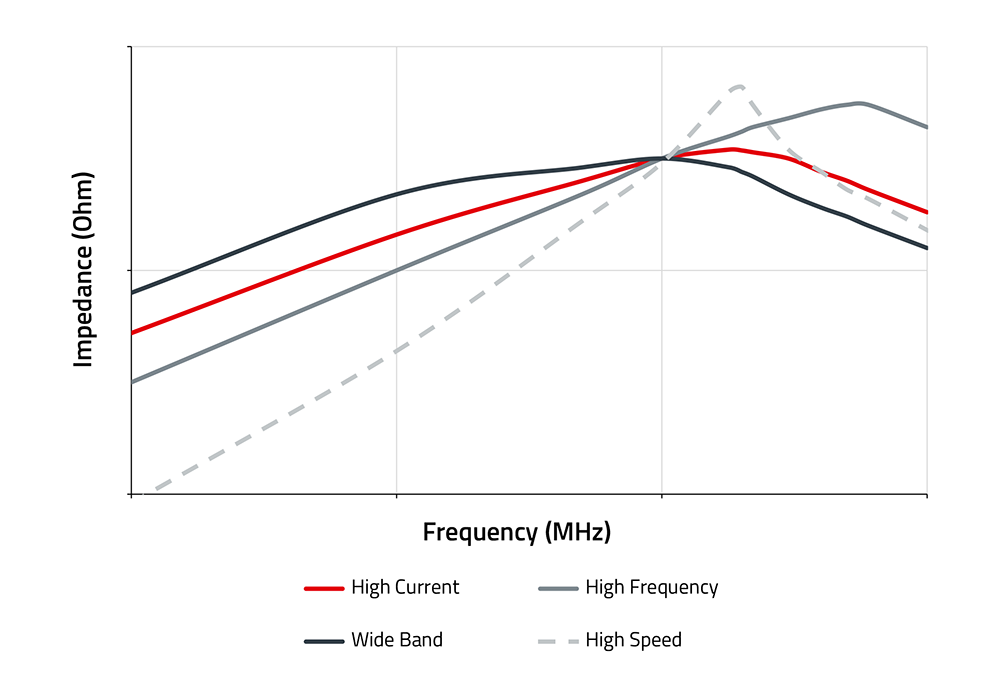Data Lines
I/O Connectors
Select SMT, THT or THR types for optimized processing. Check for high current types or short types to fit your needs. Furthermore we can support you with USB connector types like A, B, Mini and Micro in multiple orientations.
The WE-EPLE is a USB 2.0 jack that comes with a complete integrated filter circuit.
ESD Protection
ESD Protection devices should be put right behind the connector. Avoid layer hops to prevent propagation of the ESD.
Common Mode Chokes for Data Lines
On differential datalines, a CMC filters common mode noise without affecting the useful signal.
MLCCs
Load Capacitors should be low leakage and stable across temperature range (NP0). For the Capacitive load (Cload) the stray Capacitance of the PCB and the IC Pins should be considered:
CL = (C1*C2) / (C1+C2) + Cstray
Cstray ≈ 3…6pF
Ferrites for PCB Assembly
On single ended datalines SMT Ferrites are often the only sensible solution to improve Immunity. In the design of High Speed Ferrites, the bandwith of the signal is accounted for by reducing the impedance in the lower frequency range, thus maintaining signal integrity.
Signal Transformers
When working with high voltages or cables covering a longer distance, a galvanic isolation is needed between the device and the transmission line. Signal Transformers provide a 1:1 transmission with minimal insertion losses and significant common mode rejection.
Filtered Connectors
By including the typical filter components needed for the respective interface, these connectors save space on your PCB while improving EMC performance.

Interfaces
Short Introduction to Data Lines
There are various methods for transferring information between electronic devices. When it comes to digital data lines, they generally fall into two categories: single-ended and differential systems.
Single-ended data lines are cost-effective and easy to implement, making them ideal for on-board communication.
In contrast, differential signaling is preferred for longer distances or higher data rates due to its superior noise immunity and signal integrity.
Learn More About Data Lines
-
The table shows the variety of USB connectors. While there were still five different types in use for the USB 2.0 standard, the types have consolidated to only two for the USB 3.1 standard. The EU regulation requiring new devices to use USB-C as the charging standard is likely to have further accelerated this consolidation.
-
The RJ45 LAN sockets with through-hole technology (THT) for printed circuit boards offer increased robustness and mechanical stability. The plastic used, as well as the LEDs with a modified lead frame position, can withstand the higher temperatures of a reflow soldering process. An optimized housing design allows for a uniform reflow air flow to the pins.
-
The capacitance of a capacitor is typically also dependent on an applied direct current voltage (DC Bias) and can become significantly lower with increasing voltage. From the DC Bias/capacitance diagram, it is clearly visible that with increasing miniaturization of the component, the nominal value of 470 nF decreases (red curve).
-
Capacitors should maintain their capacitance as consistently as possible across temperature variations. Three of the materials used, NP0, X7R, and X5R, fulfill this requirement significantly better than Y5V, as can be clearly seen in the diagram. NP0 shows virtually no changes in capacitance over a wide operating temperature range.
-
Many applications require galvanic isolation in the signal transmission path, such as LAN connections (Ethernet). Signal transformers like the WE-LAN AQ fulfill this task. To validate the transmission path, it can be simulated with LTspice. The diagram on the right confirms the high accuracy of the simulation based on measurements.
-
When protecting against electrostatic discharge (ESD), a sensitive electronic component (Load) is safeguarded by a parallel discharge path (VDR), which becomes conductive when the breakdown voltage of the protective element (VDR) is reached. In this way, the overvoltage (Transient) does not reach the sensitive load (Load), which would exceed the threshold for system failure, but is instead "clamped" to the clamping voltage.
-
To prevent the coupling of ESD pulses and to reduce electromagnetic interference, components for ESD protection should be placed as close as possible to the entry point.
-
In data lines, common-mode signals can cause interference and affect signal integrity. A common countermeasure is the use of common-mode chokes. To select the appropriate common-mode choke, it is advisable to refer to the impedance curves over frequency instead of just considering inductance. These can be found on the RedExpert online simulation platform by Würth Elektronik.



